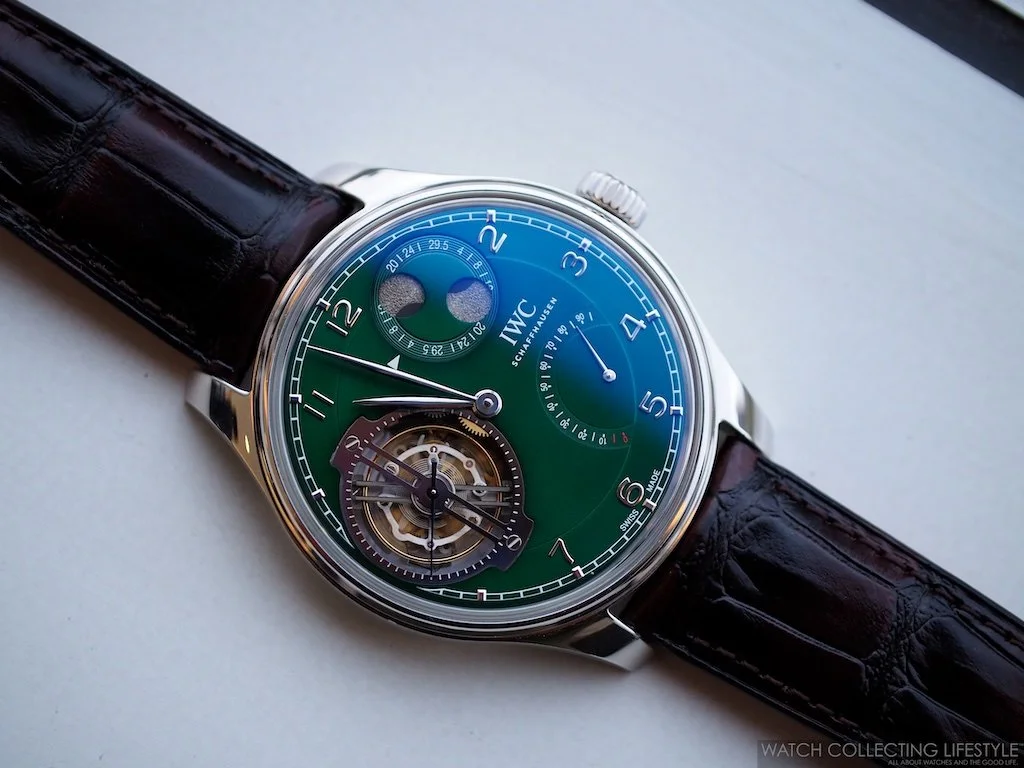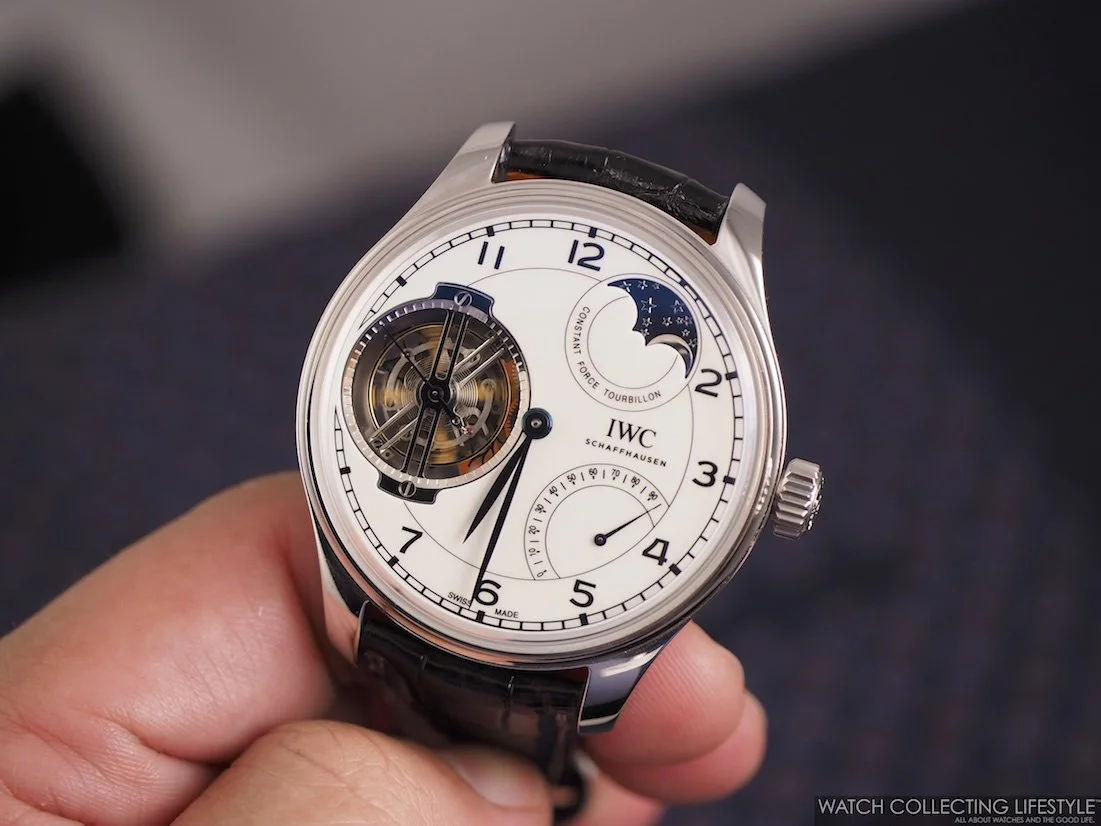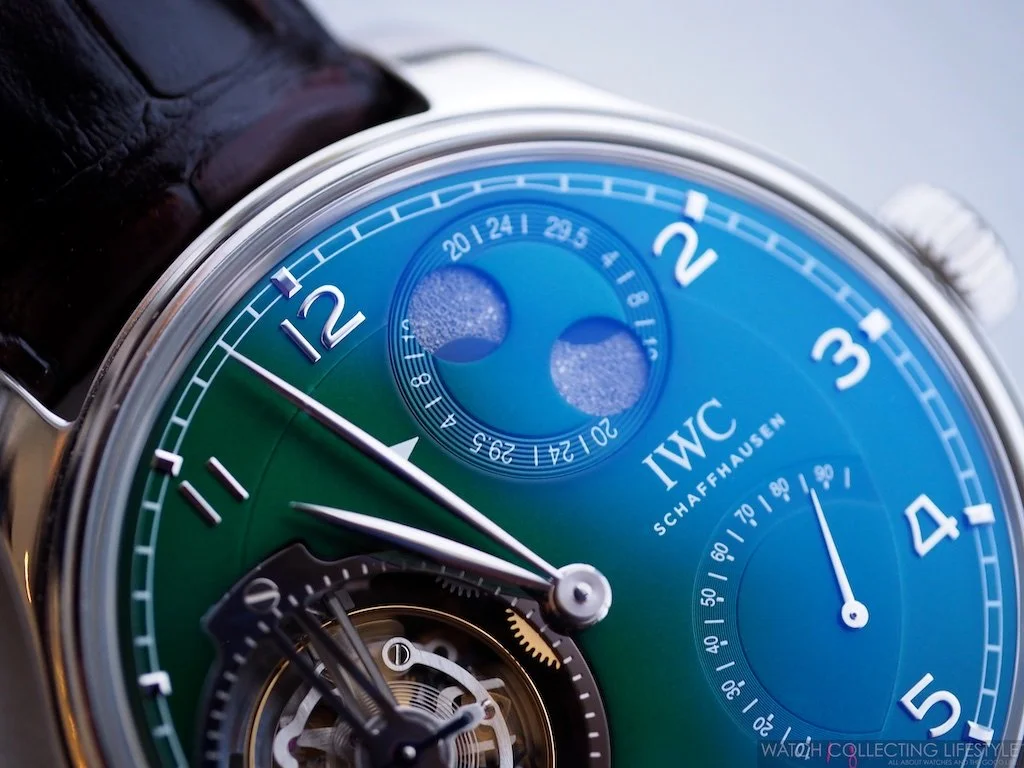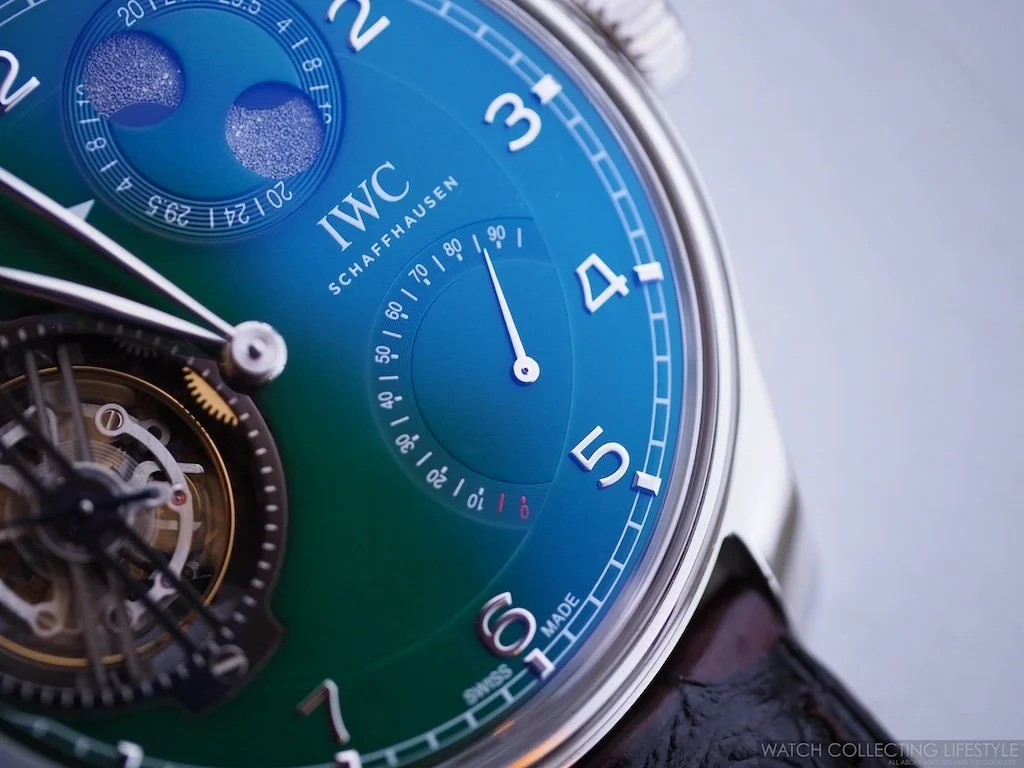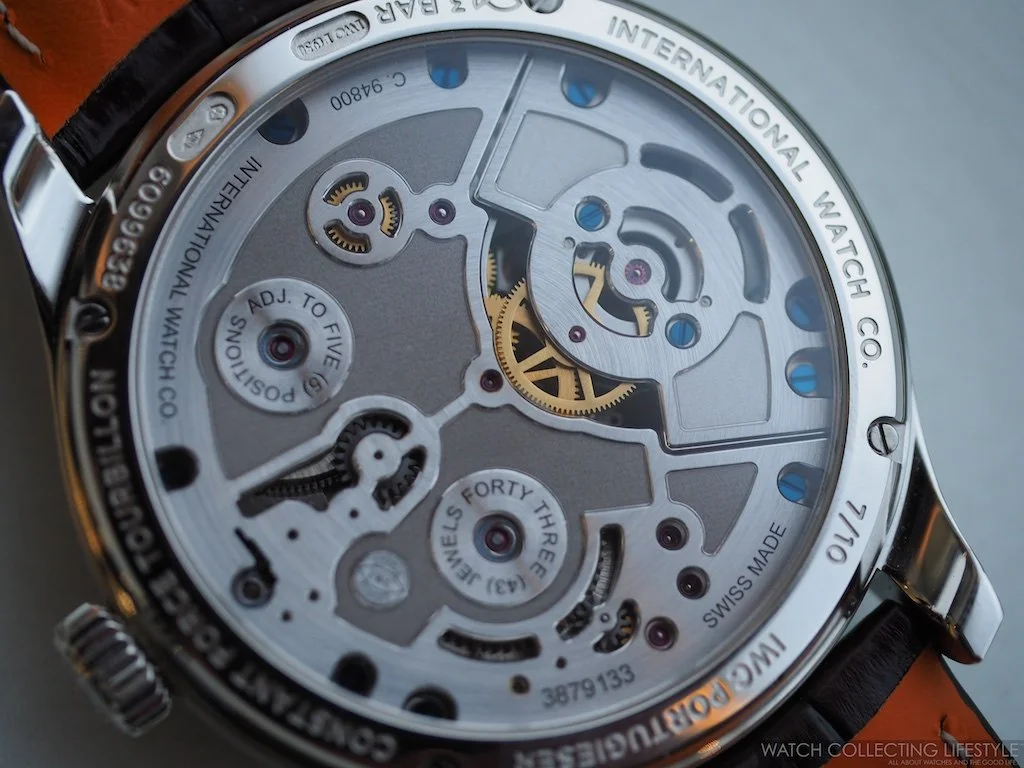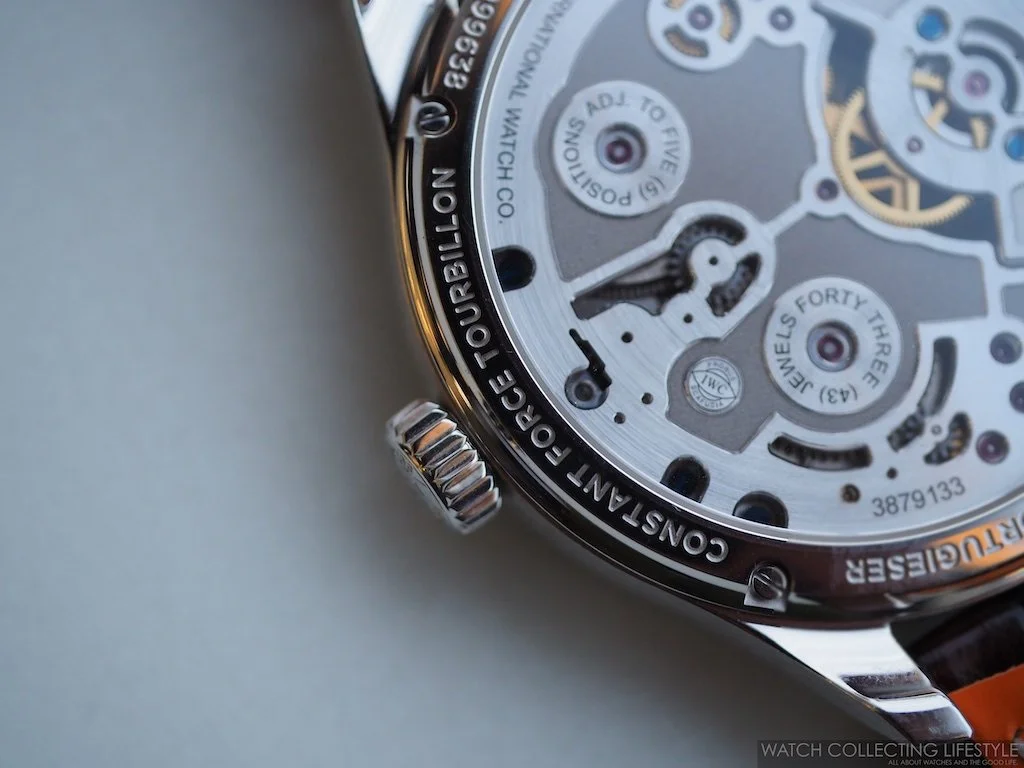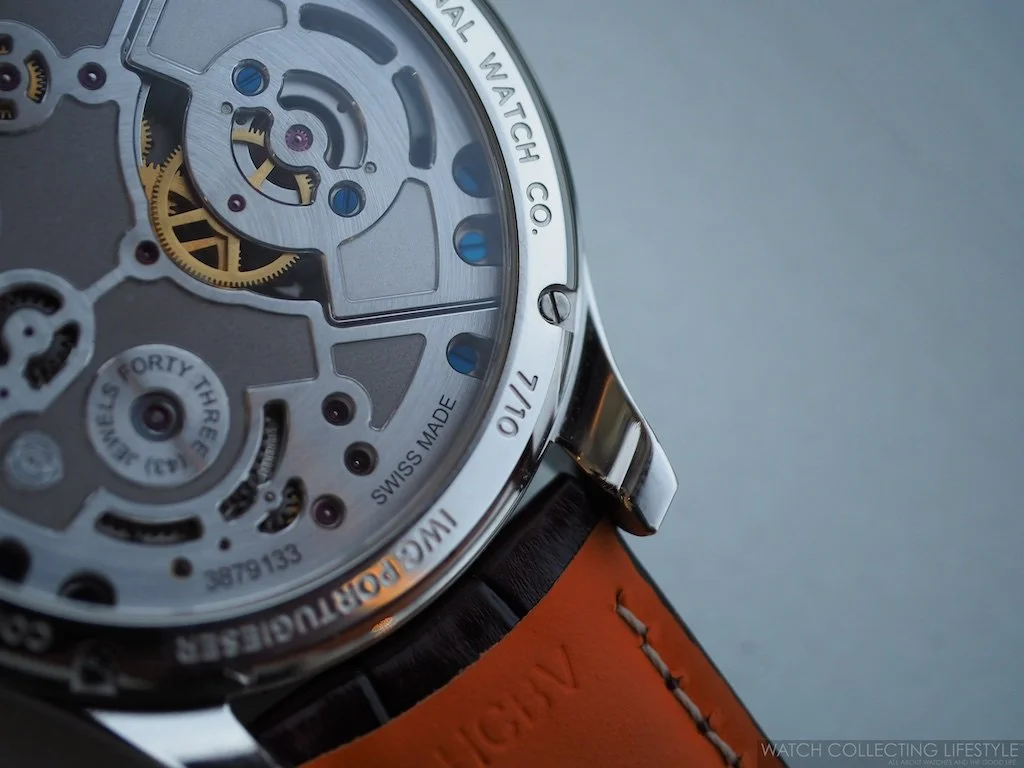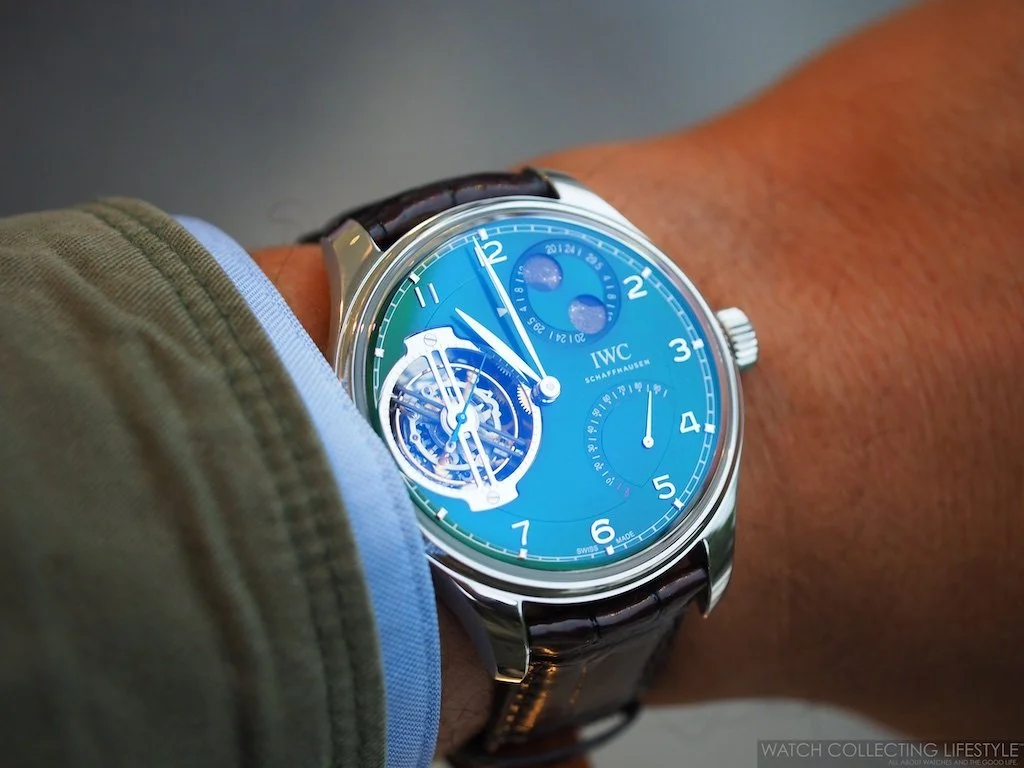In 2018, IWC added some exclusive models for their 150th anniversary, including the Portugieser Constant Force Tourbillon Edition ‘150 Years’, then, in 2019, they presented the Big Pilot’s Watch Constant Force Tourbillon Edition ‘Le Petit Prince’ in platinum and other editions followed. This was the very first time that both the Pilot's watch and the Portugieser featured a constant force tourbillon. Below is a picture of the Portugieser Constant Force Tourbillon Edition ‘150 Years’.
When IWC unveiled the Portugieser Constant Force Tourbillon Edition Green in 2020 during the COVID pandemic, we didn’t get to see the watch in the metal, so it wasn't until later that we ran into this very special IWC that we like to refer as a ‘rare bird’ considering the no other publication has ever done a hands-on review of it, let alone publish any information about it.
When the IWC Portugieser Constant Force Tourbillon Edition Green was released, the brand wasn't just creating another limited edition with a different color dial; they were pushing the boundaries of mechanical precision and improving the look of the original watch. With only 10 pieces ever produced, this platinum masterpiece represents the pinnacle of the brand's technical achievement with a striking green dial.
Things to Know About the Watch
At 46 mm in diameter and 13.4 mm thick, this is undeniably a substantial watch. Cased in platinum, the case feels appropriately weighty on the wrist, though the relatively slim profile prevents it from feeling cumbersome. The green dial—a departure from IWC's typically conservative palette—adds a contemporary edge to the classical Portugieser design language.
The green dial is the perfect backdrop for the constant force tourbillon at 9 o’clock, the perpetual moon phase display between 1 and 2 o’clock is particularly charming, with its whimsical double hemisphere indication is a delightful touch that adds personality to what could otherwise be a purely technical exercise. The moon display also rotates to indicate the moon cycle numerically. The power reserve indicator between 4 and 5 o'clock is both functional and elegantly integrated into the dial layout.
The Movement: Calibre 94805
The true star here is the in-house manual-wound movement, an evolution of the calibre 94800. With 341 components and 43 jewels, this is complexity for a purpose. The 94000-calibre family represents a manual wound movement architecture built around a dual-barrel system that delivers power to various horological complications across different iterations with an impressive 4-day power reserve—96 hours. The constant force mechanism is genuinely innovative as it disconnects the escapement from the mainspring's variable energy flow, storing power in a secondary spring that delivers perfectly regulated impulses to the escape wheel every second.
The 94800-calibre variant generates enhanced torque specifically engineered to operate the constant-force tourbillon while simultaneously driving the moon phase indicator and power reserve display. Meanwhile, the 94900 version channels its energy toward the sophisticated astronomical module found in the Portugieser Sidérale Scafusia, an exceptional timepiece that presents sidereal and solar time, sunrise and sunset times, and a real-time celestial map showing the current night sky.
In the 94200 calibre configuration, the secondary barrel operates an independent gear train dedicated to the digital Pallweber system, powering the rotating discs that display hours and minutes in jumping numeral format rather than traditional hands.
How a Constant Force Tourbillon Works
IWC has incorporated a patented constant-force mechanism within a tourbillon movement to maintain unwavering timekeeping precision. This innovative system isolates the escapement from the direct energy flow of the gear train, instead channeling power through an intermediary balance spring that stores and releases energy in controlled intervals. The mechanism operates by building spring tension once per second, advancing the tourbillon's seconds hand in distinct one-second increments. This regulated energy distribution maintains a consistent balance wheel amplitude, ensuring exceptional rate stability for approximately 48 hours of operation.
When the constant-force reserve is exhausted after roughly two days, the watch transitions to conventional timekeeping mode. This shift is visually indicated by the seconds hand changing from its characteristic one-second steps to traditional one-fifth-second movements, signaling the end of the enhanced precision period.
Combined with the one-minute tourbillon rotating at the 9 o'clock position, the theoretical precision is remarkable. In practical terms, this translates to exceptional timekeeping stability throughout the impressive 96-hour power reserve, courtesy of the dual-barrel setup.
On the Wrist & Price
This isn't a watch for everyone—the size, complexity, and astronomical price available only "on request" ensure exclusivity. But for those seeking the absolute pinnacle of mechanical watchmaking, the Portugieser Constant Force Tourbillon Edition Green delivers genuine technical innovation wrapped in understated luxury. It's a masterclass in how traditional complications can be refined and perfected through modern engineering. A remarkable achievement in haute horlogerie, held back only by its extreme exclusivity and substantial wrist presence. The watch was available in a 10-piece limited edition.
Sticker Price Upon Request—in the ballpark of USD 265,000. For more info on IWC click here.

